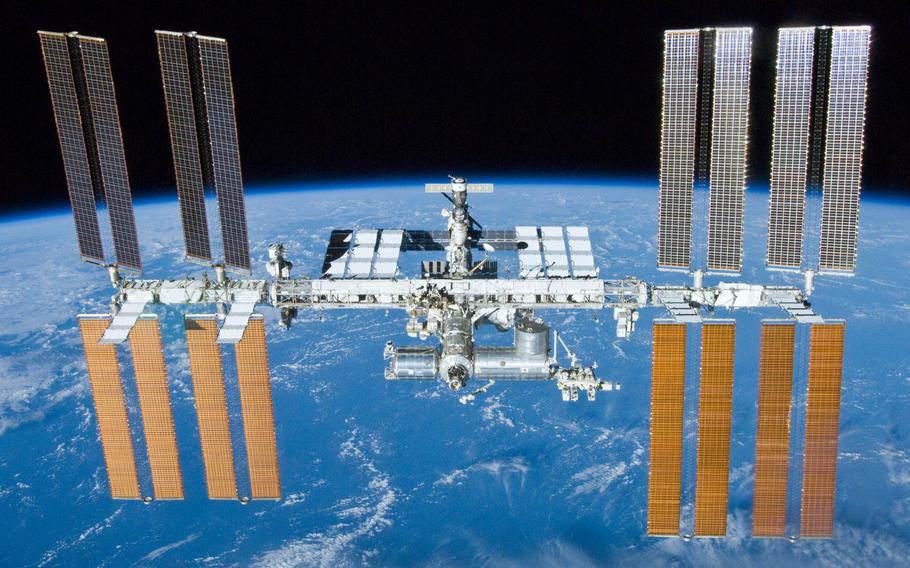
Working with their counterparts at NASA, officials at Roscosmos, the Russian space agency, are trying to determine if the vehicle is sound enough to bring the crew home, Sergei Krikalev, the executive director of Roscosmos’s human spaceflight programs, said during a briefing Thursday. If not, the Russian agency would send up another Soyuz spacecraft that was to be used for another crewed mission to retrieve the crew. (NASA)
The Russian space agency is deciding whether it needs to send a rescue spacecraft to the International Space Station to bring home two cosmonauts and a NASA astronaut after the Soyuz capsule that brought them there suffered a massive coolant leak.
Working with their counterparts at NASA, officials at Roscosmos, the Russian space agency, are trying to determine if the vehicle is sound enough to bring the crew home, Sergei Krikalev, the executive director of Roscosmos’s human spaceflight programs, said during a briefing Thursday. If not, the Russian agency would send up another Soyuz spacecraft that was to be used for another crewed mission to retrieve the crew.
That spacecraft could be ready to fly up without any people on board sometime in February, a few weeks before the crew is set to return in March, officials said.
The crew that would fly home on the rescue craft would include NASA astronaut Frank Rubio and a pair of cosmonauts, Sergey Prokopyev and Dmitri Petelin, who arrived at the station in September.
On Dec. 14, as a pair of cosmonauts were preparing to exit the station for a spacewalk, ground controllers at Roscosmos and NASA detected a leak of coolant gushing controllably from the Soyuz capsule.
Roscosmos quickly canceled the spacewalk. And after inspecting the vehicle with the station’s robotic arm, they determined the leak was from an external cooling line used to keep the capsule at a comfortable temperature as it transports crews through the atmosphere into the vacuum of space.
In a statement last week, NASA said that “none of the crew members aboard the station was in danger, and all conducted normal operations throughout the day.” It added that, “images and data are being analyzed by Roscosmos. The agency also is closely monitoring Soyuz spacecraft temperatures, which remain within acceptable limits. NASA and Roscosmos are continuing to work together on a course of action following the ongoing analysis.”
None of the coolant contaminated the space station, said Joel Montalbano, NASA’s space station manager, and the astronauts on the station continue to conduct science experiments, including growing tomatoes.
It is not clear what caused the leak. Montalbano said possible causes being investigated are a failure of hardware on the craft or possible damage from a piece of debris or a micro meteorite.
On Wednesday, NASA canceled a spacewalk to install an upgraded solar array because a piece of debris was expected to come within a quarter-mile of the station. Crews maneuvered the station to avoid the debris, and the spacewalk was rescheduled for Thursday.